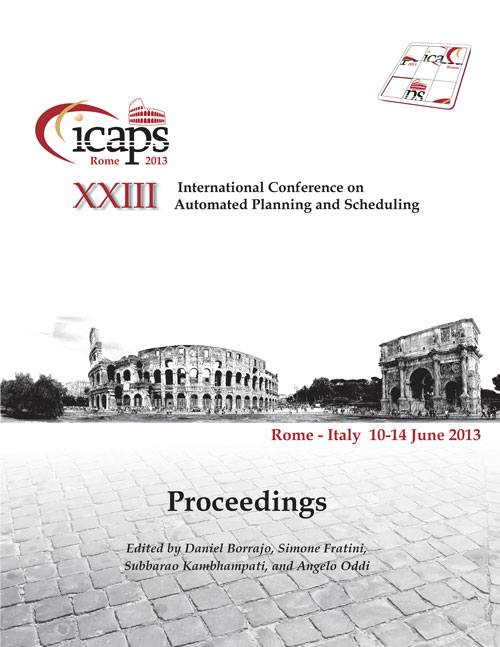Autonomous Search and Tracking via Temporal Planning
DOI:
https://doi.org/10.1609/icaps.v23i1.13582Keywords:
Automated Planning, Temporal Planning, Search and Tracking, UAVs, AutonomyAbstract
Search And Tracking (SAT) is the problem of searching for a mobile target and tracking it after it is found. As this problem has important applications in search-and-rescue and surveillance operations, recently there has been increasing interest in equipping unmanned aerial vehicles (UAVs) with autonomous SAT capabilities. State-of-the-art approaches to SAT rely on estimating the probability density function of the target's state and solving the search control problem in a greedy fashion over a short planning horizon (typically, a one-step lookahead). These techniques suffer high computational cost, making them unsuitable for complex problems. In this paper, we propose a novel approach to SAT, which allows us to handle big geographical areas, complex target motion models and long-term operations. Our solution is to track the target reactively while it is in view and to plan a recovery strategy that relocates the target every time it is lost, using a high-performing automated planning tool. The planning problem consists of deciding where to search and which search patterns to use in order to maximise the likelihood of recovering the target. We show experimental results demonstrating the potential of our approach.

